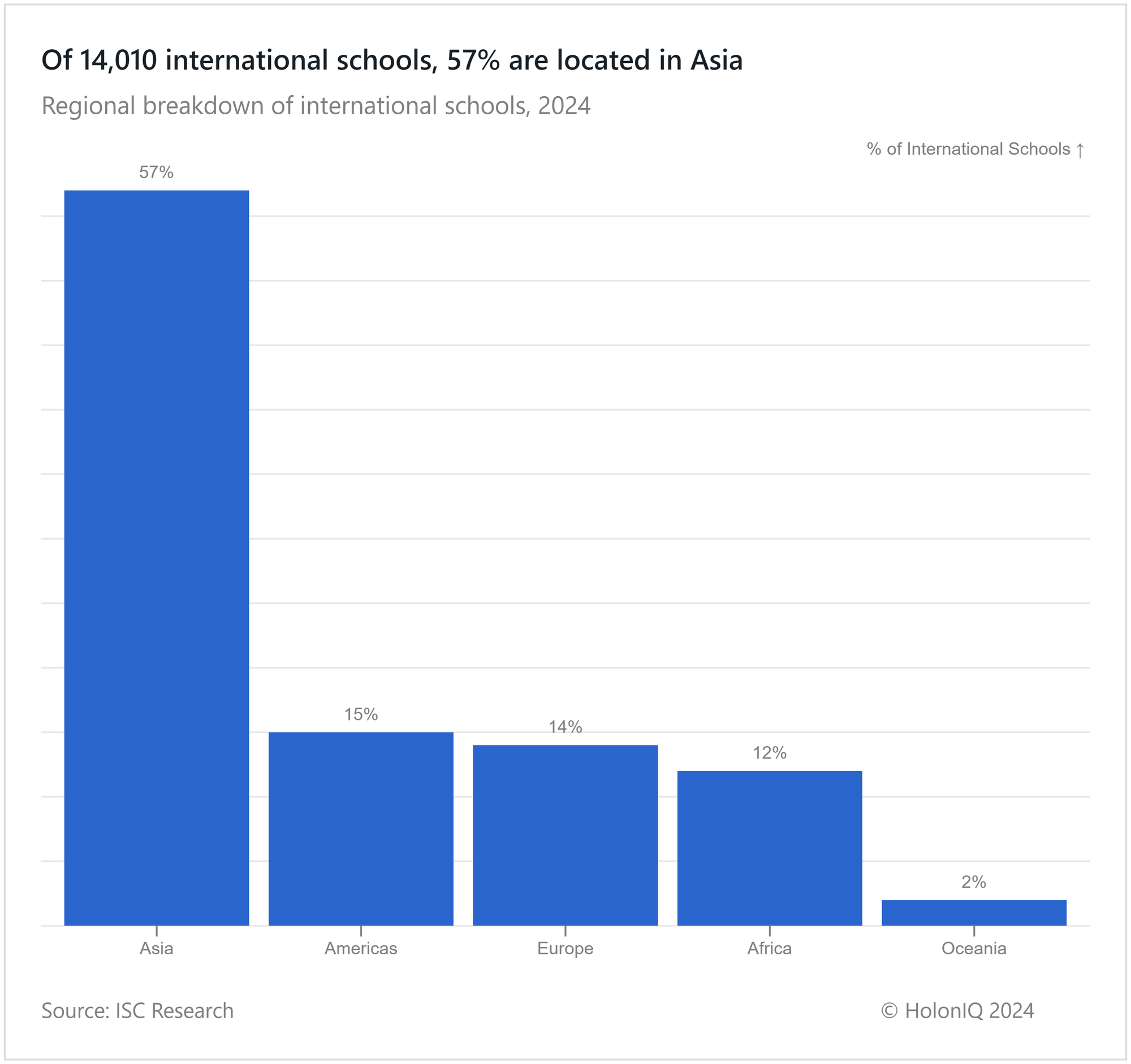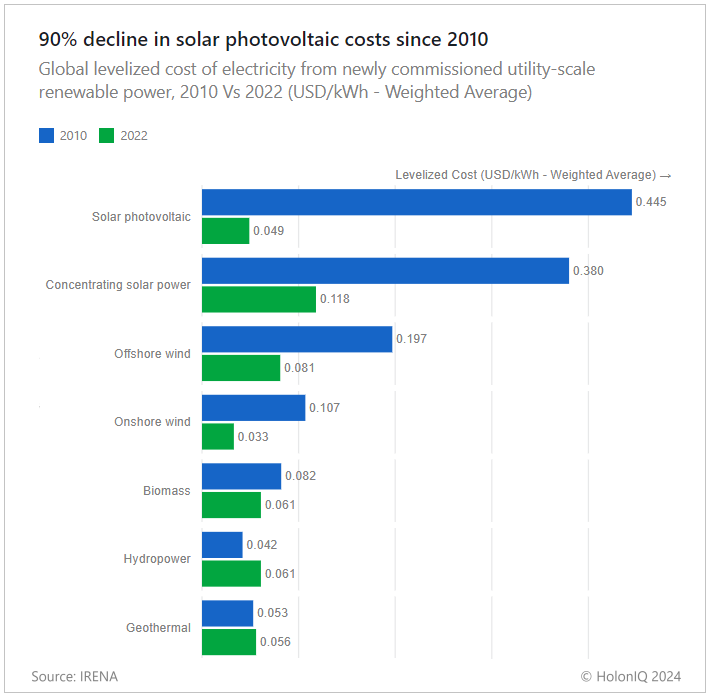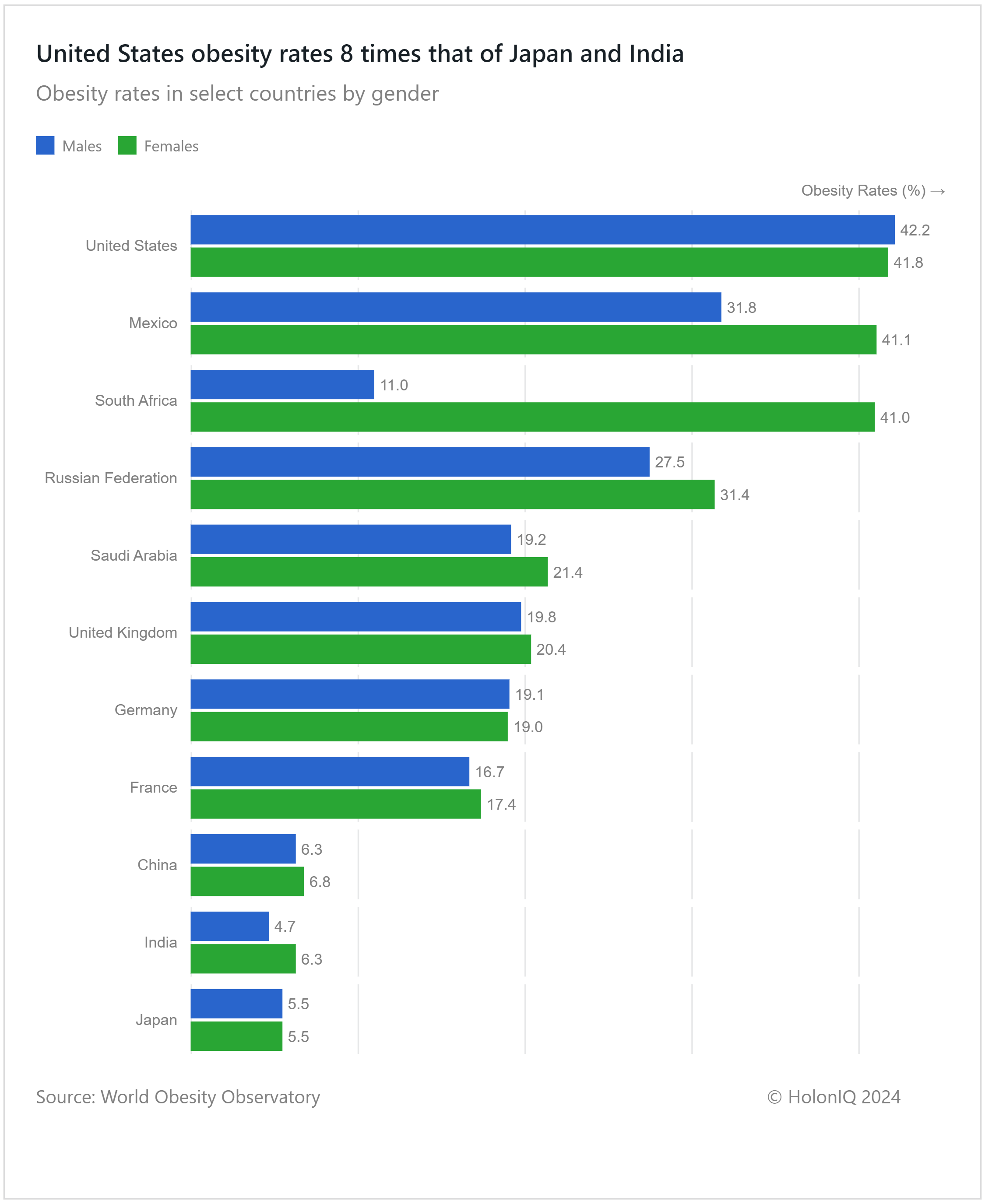🌞 Solar Down 90%. US Obesity 8x. International Schools.
Chart of the Day #34 looks at International Schools, Energy Costs, and Obesity Rates
Vanakkam 👋
India now has the world's fourth-largest installed renewable capacity, enough to power around 18 million homes. Almost half of this capacity comes from solar energy sources. The IEA estimates that by 2026, the electricity usage of data centers can increase to levels between 620 and 1,050 TWh, which is equivalent to the energy demands of Sweden or Germany.
Today's Topics
- 🎓 International Schools. 57% of international schools are in Asia
- 🌞 Energy Costs. 90% decline in solar PV electricity costs
- 🍔 Obesity Rates. US obesity rate 8x Japan & India
For unlimited access to over one million charts, request a demo.
🎓 57% of International Schools are in Asia

Asia dominates the international school landscape, with 57% of the schools located within the region. This can be attributed to the increasing inclination of Asian households to send their children abroad for higher education. International schools provide globally recognized certifications and curricula, which open up pathways for international studies and are perceived to be an advantage for employment prospects.
International schools also serve as a vital tool in overcoming language barriers and challenges in cultural diversity. With 32% of international schools adopting a bilingual approach, they actively contribute to equipping students with skills for a globalized workforce.
🌞 90% Decline in Solar PV Electricity Costs

Solar energy has experienced the most significant reduction in levelized energy costs since 2010. This decline is primarily attributed to the decreasing costs of solar panels and inverters, the increasing efficiency rates of solar panels, and the increased number of installations. Although the cost of solar installations has risen in the past year as a result of high interest rates, the overall trend remains. This trend is particularly beneficial for governments to provide affordable energy to underserved communities.
Following closely, wind energy has also substantially dropped in levelized costs. Onshore wind energy has lower initial setup costs due to existing infrastructure, decreased maintenance expenses, and readily available installation materials, whereas offshore wind energy tends to incur higher upfront costs. This disparity can be as much as 20%, primarily due to the absence of established energy transmission infrastructure at sea, coupled with maintenance and technical challenges.
🍔 US Obesity Rate 8x Japan & India

In the United States, high obesity rates are primarily attributed to the widespread consumption of processed foods coupled with a decline in physical activity. While high-income countries tend to have higher obesity rates, Japan stands out as the country with the lowest obesity rates, reflecting the lifestyle choices of the population, including the Japanese diet, which is characterized by low consumption of oil and salt.
South African women exhibit the third highest rates of obesity, primarily stemming from the prevalence of jobs requiring less physical activity and a heavy reliance on motorized transportation according to a study. The surge in urbanization has further exacerbated the issue, creating an environment where processed foods are more readily available, contributing to elevated obesity rates.
Like getting this newsletter? For unlimited access to over one million charts, request a demo.
Thank you for reading. Have a great week ahead!
Have some feedback or want to sponsor this newsletter? Let us know at hello@holoniq.com
